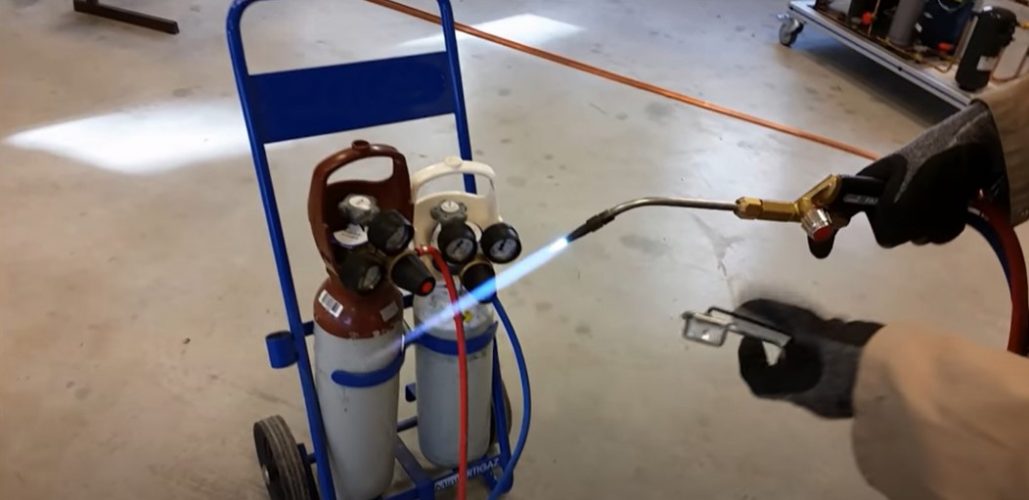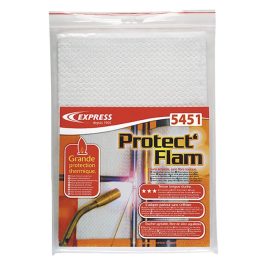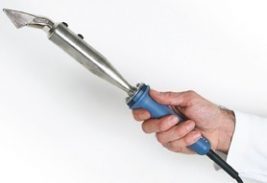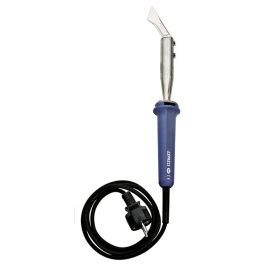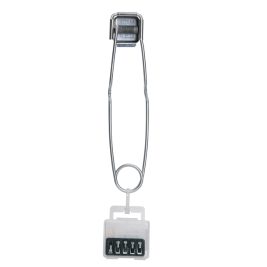Oxyacetylene welding enables you to fuse your parts together, with or without filler metal. This type of welding has a wide range of uses: garages, heating companies, agriculture, boiler making, locksmiths and metal joiners, etc. The pressure of the two gases, acetylene and oxygen, must be precisely adjusted for the torch to work optimally.
How does the oxyacetylene welding unit work?
The oxyacetylene torch uses two gases – oxygen and acetylene – to generate an adjustable flame that can reach temperatures of up to 3,200°C. Oxygen acts as an oxidiser, acetylene as a fuel: the former draws the latter into the torch.
To obtain a good quality flame, the pressure of the oxygen must be higher than that of the acetylene in the torch.
The welding unit consists of :
1 cylinder of oxygen compressed to 200 bar ;
1 bottle of acetylene dissolved at 15 bar in acetone;
two pressure regulators for adjusting the cylinder pressures;
safety devices;
The unit can be mounted on a trolley for easy transport. The oxygen cylinder is marked “Oxy”. It has a white marker and a blue hose. The acetylene cylinder has a brown “havane” marker and a red hose.
Formation of the oxyacetylene flame
The oxyacetylene flame is produced by the simultaneous combustion of oxygen and acetylene as soon as the torch is lit. For acetylene combustion to be complete, there must be a ratio of 2.5 volumes of oxygen to 1 volume of acetylene. The torch supplies the full volume of acetylene, but only 1.2 volumes of oxygen, while the remaining 1.3 volumes are drawn from the ambient air.
These proportions must be scrupulously respected to generate a quality flame. If the oxygen dose is insufficient, the torch produces a less hot flame, known as carburising. Too much oxygen produces an oxidising flame. This is characterised by the insertion of oxides (or chlorides, nitrides, sulphides) of a given metal, if it is heated and confronted with this flame. Only the right proportion generates a reducing flame that can be used for welding.
The flame is made up of 3 zones: the sting, the reducing zone and the plume. Each zone has a different temperature. The reducing zone is the active part that can reach a temperature of up to 3,200°C. This enables autogenous welding of the metal that fuses the parts to be welded, using the oxyacetylene flame, with or without filler metal.
Pressure adjustment for oxyacetylene welding
The pressure of the two gas cylinders is adjusted by turning the regulator screw on each cylinder clockwise. First, open the gas cylinder valves by turning them counter-clockwise a quarter turn.
The pressure setting on the oxygen cylinder should be between 0.8 and 1.5 bar. The acetylene cylinder pressure should be set between 0.3 and 0.5 bar. Next, open the taps on your torch. This operation causes the pressure to drop, so you need to readjust it before starting to weld.
First open the torch’s red acetylene tap until you get a slight flow, then gradually open the blue oxygen tap until you get the flow and then the desired flame after ignition.
Always light your flame with a specially designed gas lighter and never with a lighter.
Related products
Products associated with this item available on express
-
21,87€ HT
Brazing protector pad Protect’ Flam 5451
Soft thermal protection to protect all wall coatings from the flame. Reusable. No... -
